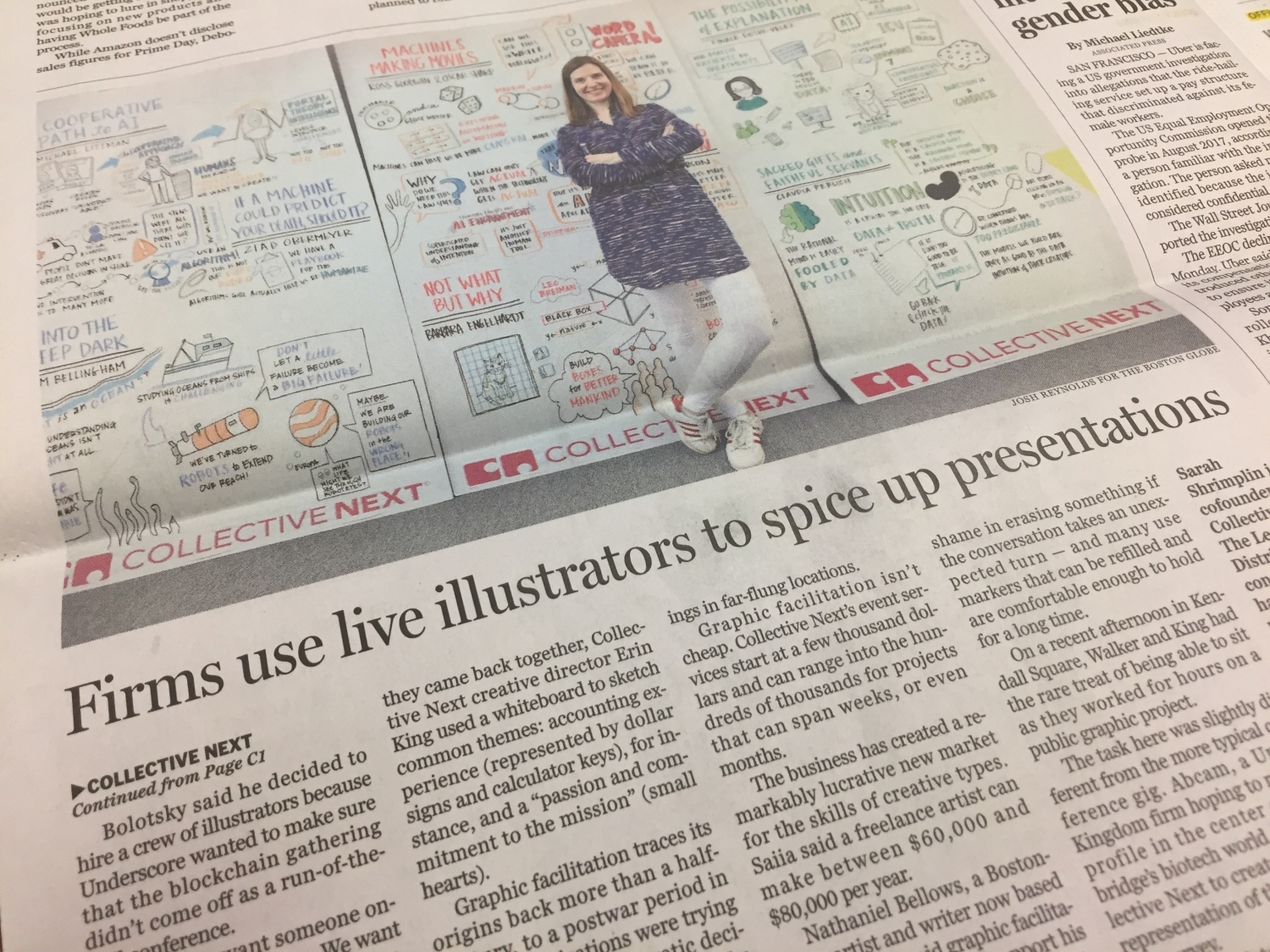“Forget PowerPoint. Meet the hottest new addition to the business meeting: the illustrator.” So reads the Boston Globe feature on how Collective Next’s live illustrators (aka graphic facilitators) can transform your organizations next get together. As the Globe piece notes, graphic facilitation’s popularity has taken off around the country—and the world—in recent years. Companies now recognize the value of using real-time visual capture in the form of drawing to heighten engagement, add clarity, signal innovation, and infuse creativity into their meetings. Cory Bolotsky of the venture firm Underscore VC says he turned to graphic facilitation because it’s “cool” and he wanted conversations to “engaging, and educational, and interactive.”
Reading the article, you can get a sense of the many venues and formats which lend themselves to graphic facilitation. CN’s Creative Director, Erin King, describes using graphic facilitation in organizations ranging from the local Girls Rock Camp to the global life sciences company Abcam. In the first instance she captured live discussions and report backs on a whiteboard. In the latter, she partnered with colleague Tricia Walker to create an illustrated installation in Kendall Square based on input from passersby. And it doesn’t stop there—graphic facilitation can be done digitally and shared on screens ranging from small laptops to a jumbotron depending on your needs.
At Collective Next, graphic facilitation has been central to our approach in working with organizations since our inception. Live visual capture is a creative intervention that supports and facilitates collaboration by surfacing key themes and points of connection for a group. Through graphic facilitation, conversations or presentations that take place over time are reflected back in a single frame format that provides a holistic view of the content. Not only does the graphic facilitator underscore salient content and through lines, but the viewer is then invited to weave further connections.
And graphic facilitation shapes group dynamics in the moment as well. As CN’s CEO Matt Saiia explains to the Globe, there is power of visually capturing what someone has said in a group dialogue: “Acknowledging somebody’s voice allows them to feel heard…We’ve all been in a room where that individual is saying the same thing over and over again. Part of it is because they’re not sure that they were heard.” Once someone feels heard, they are better able to listen and take in what is being said by those around them. Listening opens the door to collaboration and co-creation.
We hope you have a chance to read the full article in the Globe. We welcome the chance to talk to you more about graphic facilitation. Please send any inquiries to our co-founder Sarah Shrimplin (you’ll see her picture in the article!) at [email protected].

Back




